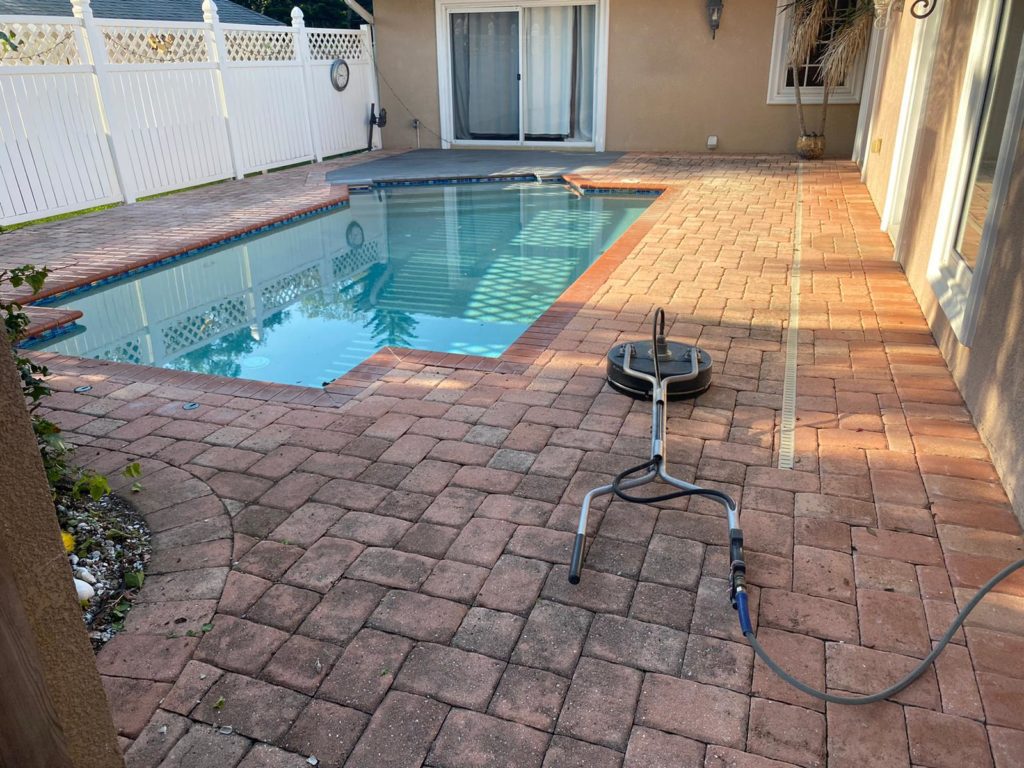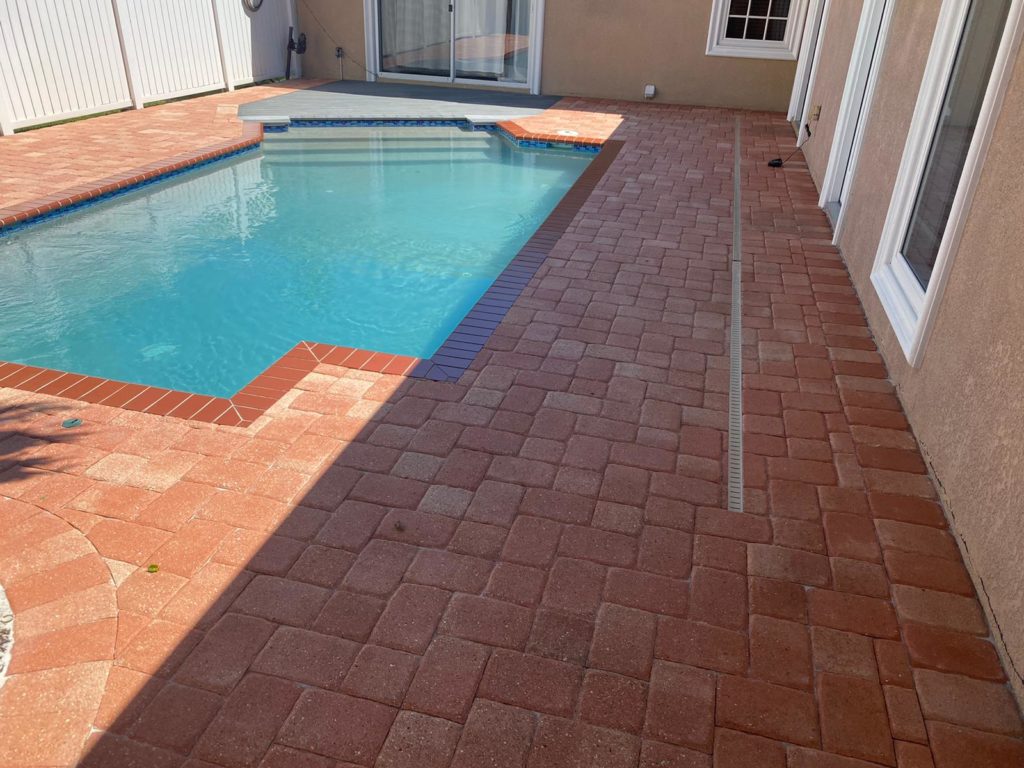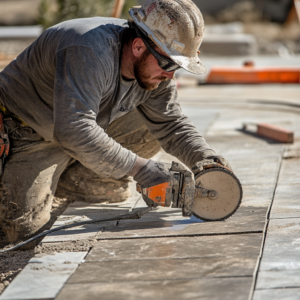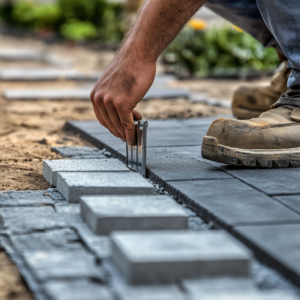Like any other surface where people, cars, and animal transit, concrete pavers are also subject to detrition. Other agents such as wetting and drying, expansion and contraction, light and shade, etc. also accelerate this wear down process.
This leads us to the following question: can you paint concrete pavers? Sure, this would be a quick answer for the wearing down issue. But is that the correct action to take? Hopefully, this article will answer all your questions, so let’s get to it.

Jump to:
Can You Paint Concrete Pavers?
The quick answer to your question is yes, you can. But what you should be asking yourself is: “Should I paint my concrete pavers?”. We’ll explain to you later how to proceed, in case you opt to paint your concrete pavers. But first, we would like to explain why we don’t recommend you to do that.
It’s completely understandable that you want your pavers to always look new. And as we have mentioned before, over time, eventually they’ll wear down. But is it really necessary to paint them? No, it is not and below we’ll explain to you what can you do instead.
Cleaning And Sealing As An Alternative To Painting Concrete Pavers
This is probably your best choice, and you should really consider it before even thinking about painting your pavers.
One of the many reasons behind it is that the end result will be way better, your pavers will look new again, and there will not be a layer of paint soon to peel off over them.
The big downside for painting concrete pavers being the unnecessary (and unwanted) application of chemical products. And as we have discussed in a previous article about how to kill weeds in your driveway pavers, the more products you apply to your pavers, the bigger the chances you’re wearing it down even more.
Your newly painted pavers will look new, but eventually, the painting layer will peel off, and you’ll have to paint it again.
Painting pavers – How the process works
Similarly to the Cleaning and Sealing process, the painting process also begins with you preparing the concrete pavers to receive the paint. And by prepare, we mean cleaning it. Remove any weeds growing in between or alongside the pavers, brush any dirt, dust, and debris from the pavers’ surface, the best way to do that is by pressure washing. At this point (after a good clean up), you’ll understand what we meant at the beginning of this article. Your pavers will be looking almost new again and you’ll be second-guessing the whole painting idea.
Of course, if you decide to move ahead and paint your pavers, it gives you the opportunity to create different patterns. But as we said, colors will fade, the previously beautiful patterns you created with different colors will now look weird.

Cleaning and Sealing X Painting
Work and money-wise, for both, cleaning and sealing is also more beneficial. That’s because, up until the moment you start painting the pavers, the process is basically the same.
We really don’t recommend you to paint your pavers without properly sealing them first. While you were cleaning, you probably got rid of more than just dust and weeds. Spaces between pavers should always be properly sealed, otherwise, you’ll risk etching them.
Before painting your pavers you need to:
- Check the weather. The temperature should be 50 degrees F or above. Delay paint if rain is in the forecast;
- Treat any stains on your pavers so they don’t show through the paint;
- Pour a solution with some household dishwashing detergent on your pavers and scrub them with a stiff broom. Allow the solution to sit for 15 minutes;
- Rinse off the pavers with a garden hose. Sweep off any puddles with a broom and allow your concrete pavers to dry overnight;
- Spray or roll on a coat of concrete primer. Allow your pavers to dry completely;
Now you can apply a layer of acrylic cement paint. You can use a roller or sprayer to do so, then just allow the paint to dry. Note that it can take up to 24 hours for the paint to dry. After that, apply a second coat of paint and let it dry as well.
Finally, apply at least two layers of concrete sealant, observing the recommended time for drying between coats. We recommend you use a clean paint roller or sprayer to apply sealant, just as you did with the paint. Avoid walking or driving on the pavers until the sealer has cured. This process can take up to 48 hours.
In conclusion
Aside from all the work you have (or money you spend) painting your pavers, there’s also a lot to think about when it comes to maintenance. For instance, the paint creates a membrane that prevents moisture from escaping the pavers, so painting layers are bound to peel, eventually.
Most people decide to paint their concrete pavers to make them look new again. But the truth is, you don’t have to go through all the trouble for that. In our experience, a good cleaning and sealing work can bring back that fresh look your pavers had back when you first had them installed.
If you decide to go ahead and paint your pavers, just make sure all pros and cons are clear to you. Take all the precautions and everything should be fine. Now, if you choose to give Sealing and Cleaning a try, before painting, make sure you leave us a message clicking here or give us a call.



